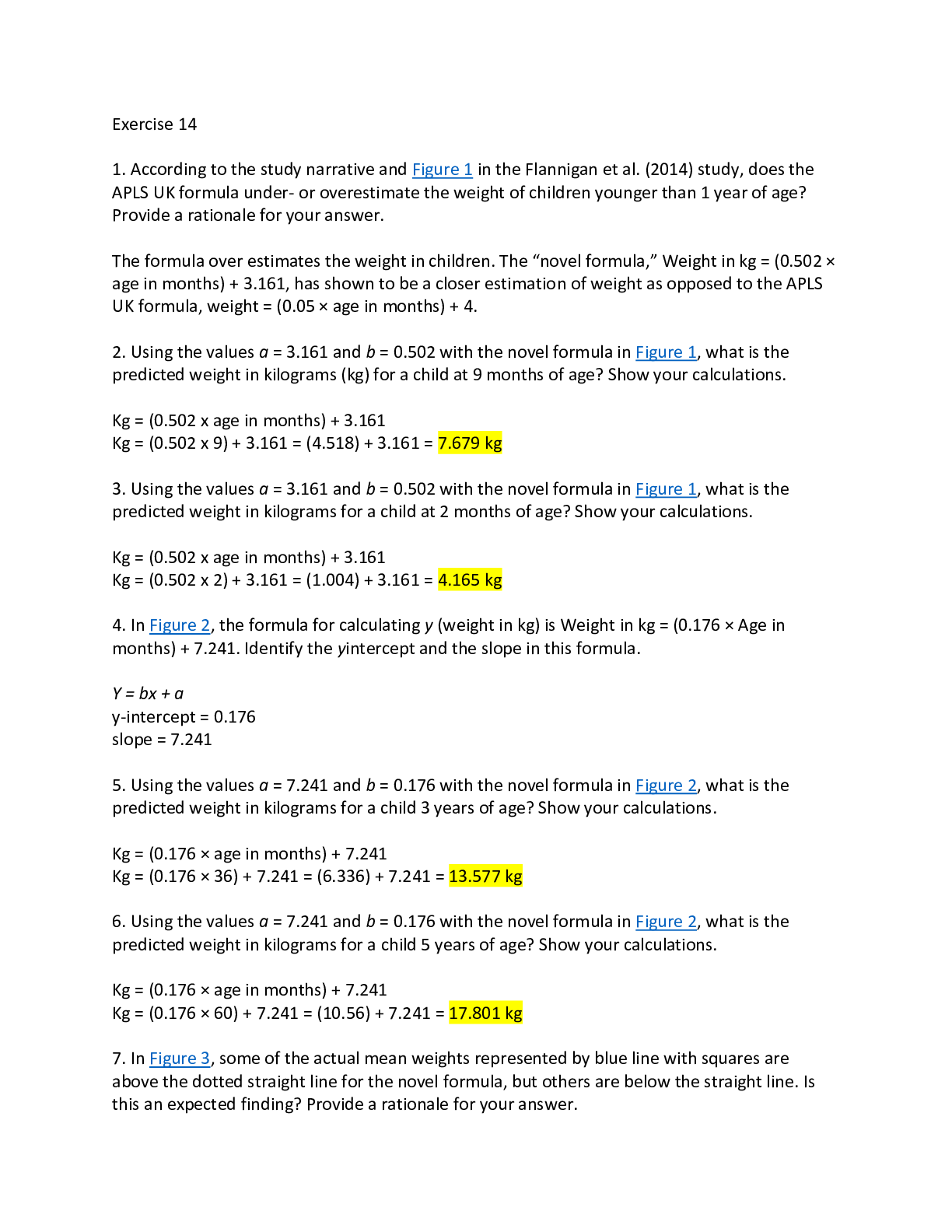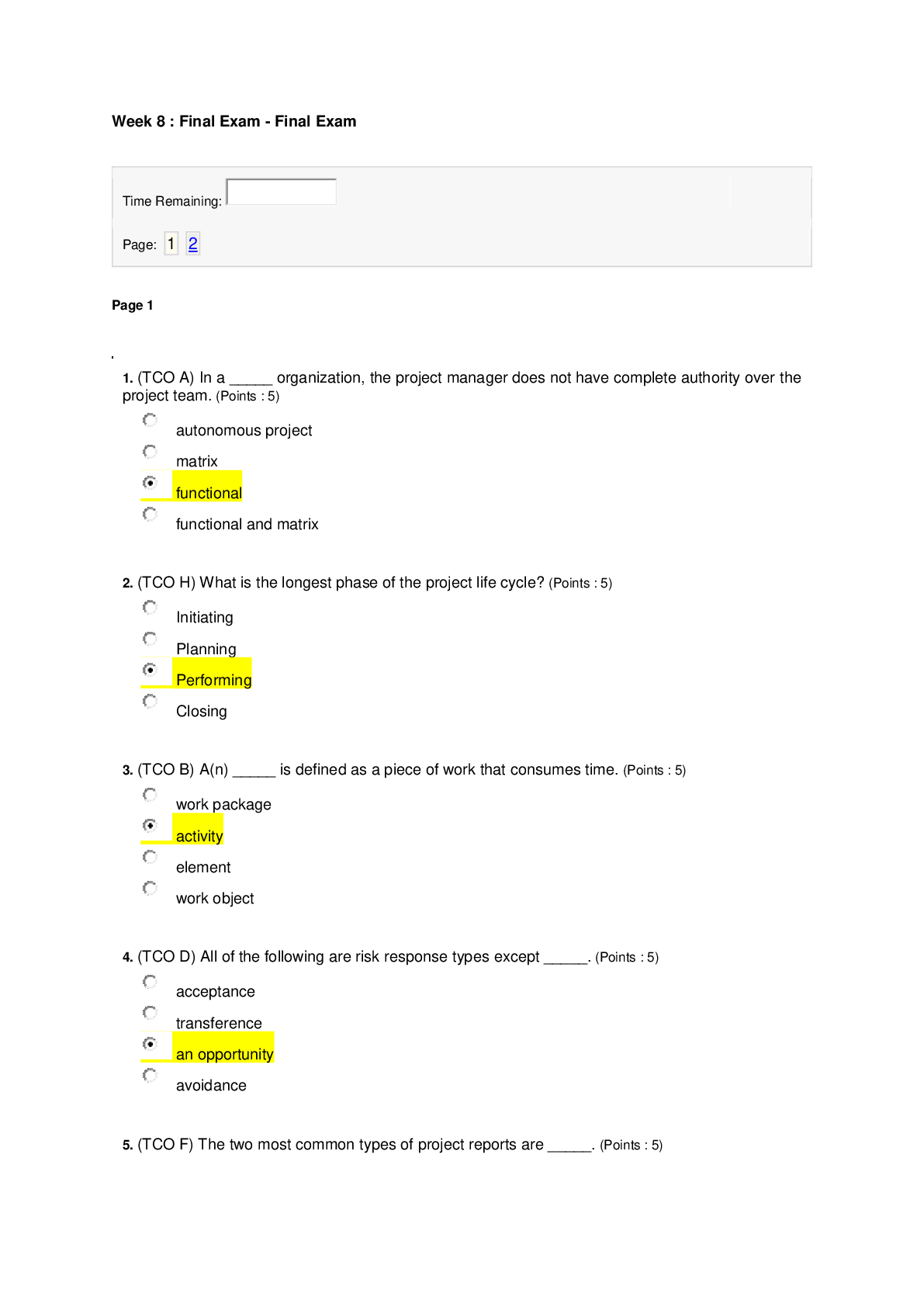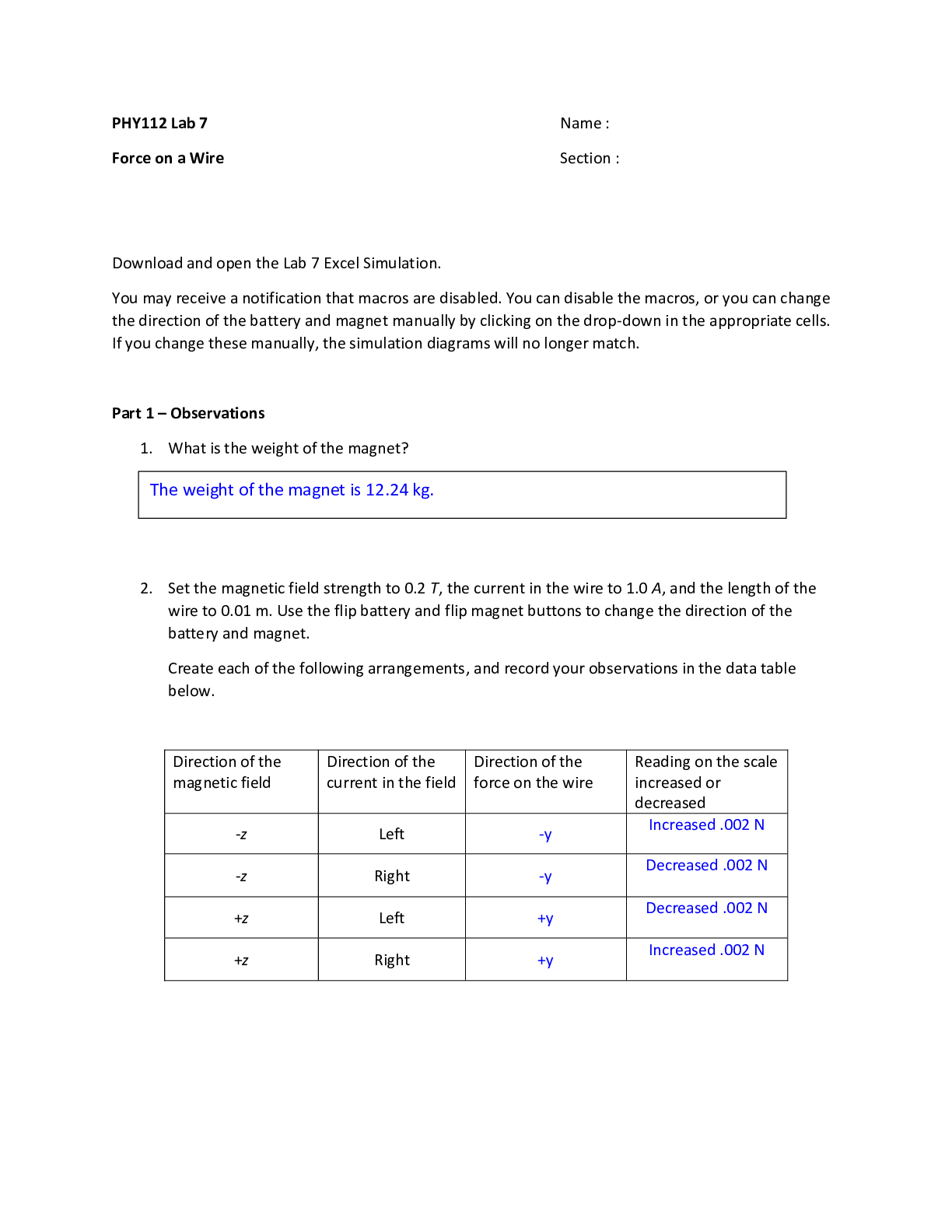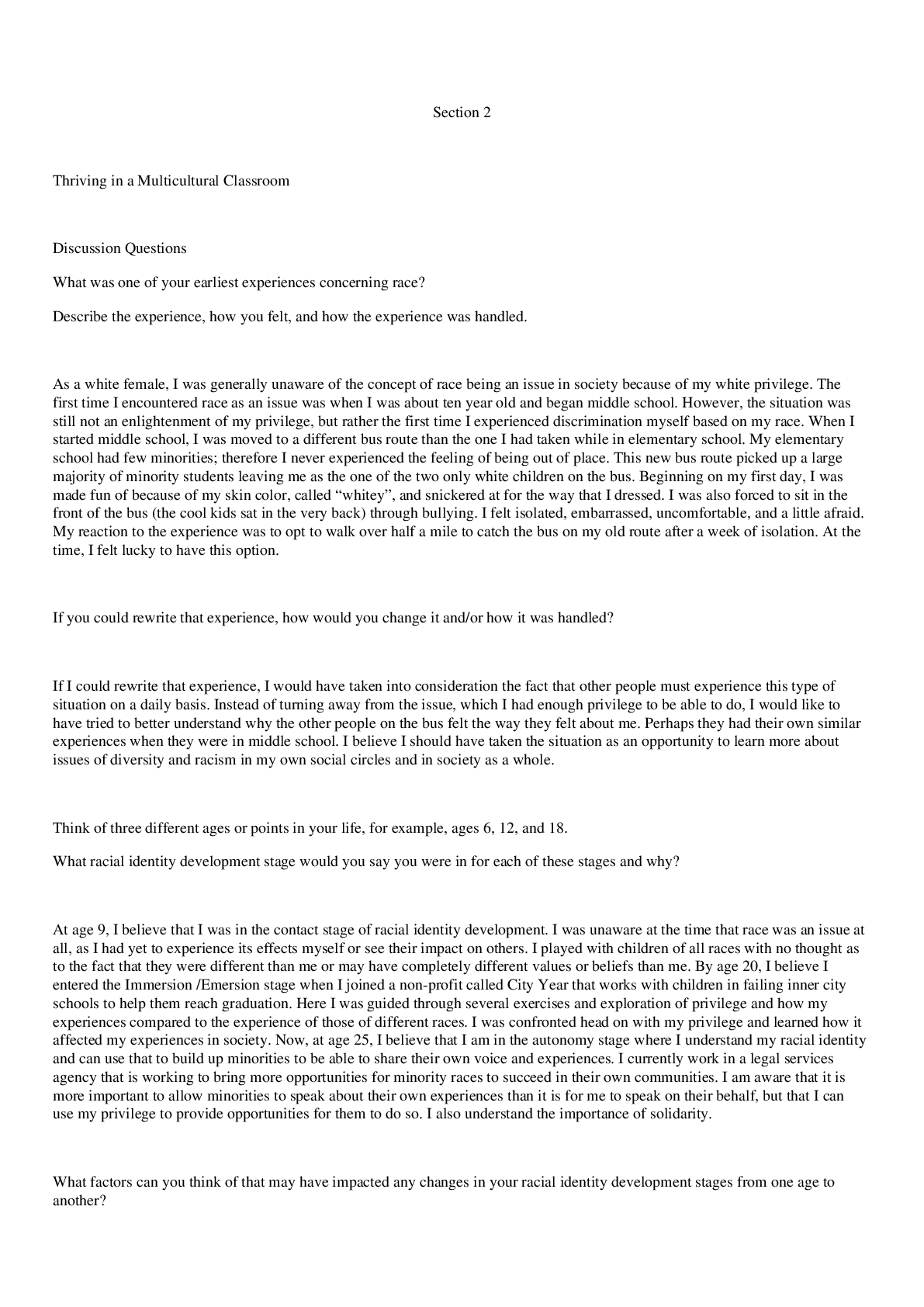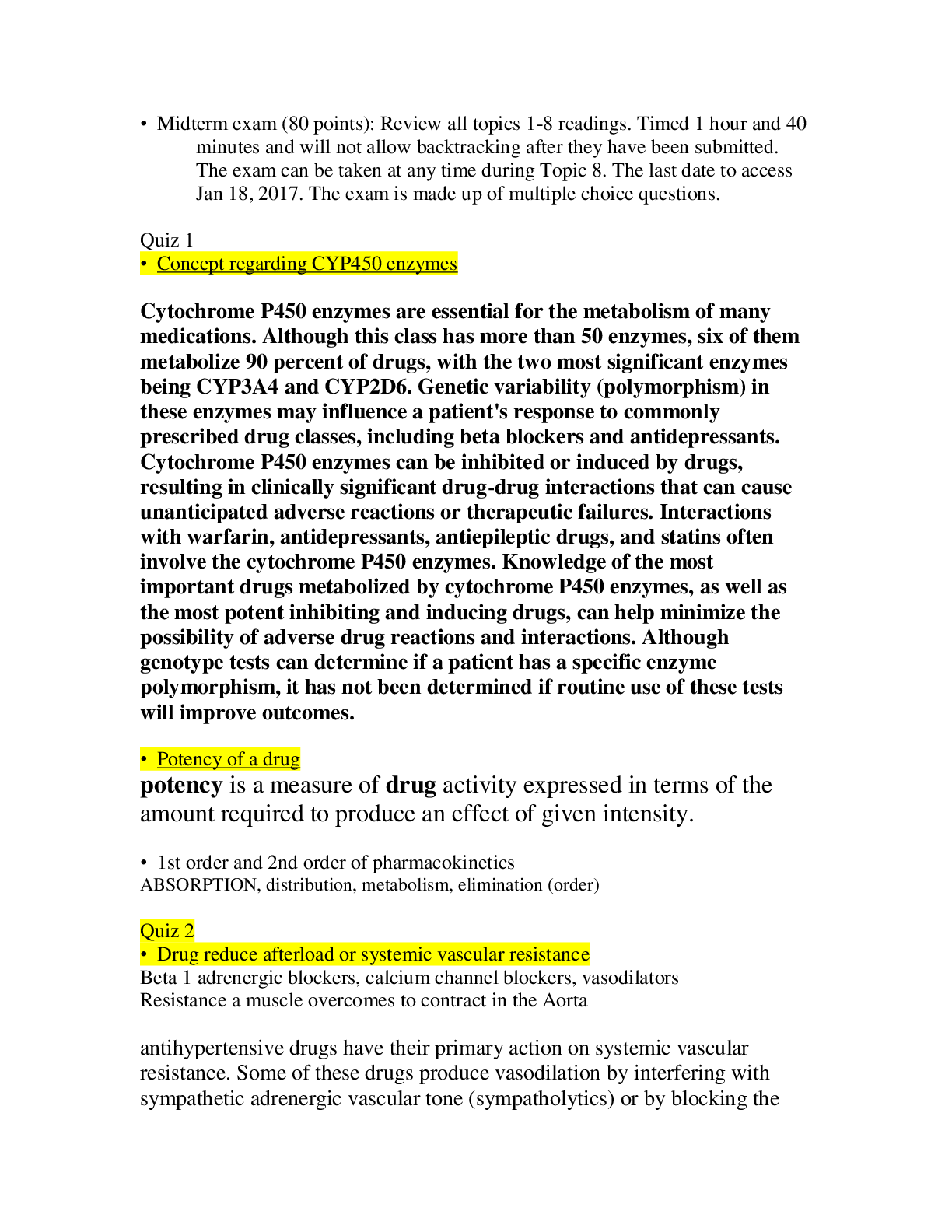Biology > STUDY GUIDE > BIO 101Katelee_Schaus_Week_4_Organism_Physiology_Paper (All)
BIO 101Katelee_Schaus_Week_4_Organism_Physiology_Paper
Document Content and Description Below
Organism Physiology There are many different types of organisms that could have been chosen for this assignment. Organisms are any living thing such as fungus, animals, plants, or microorganism. It ... is a body made up of organs, organelles, or other parts that will work together to carry on the various processes of life. The organism I chose for this assignment is jellyfish, or scientifically known as “Medusozoa.” The name “jellyfish” is a term that refers to the enormous variety of creatures that live in the sea. Some jellyfish live in fresh water. Jellyfish is an animal that belongs to phylum cnidarians, that is included in the class of scyphozoan. They are members of two groups that float freely or swim. The two groups are cnidarians and ctenophores. The type of jellyfish in the diagram is the scyphozoan medusa. They are the jellyfish that is commonly found washed up on seashore (Buiding Bodus of Jelly-Jellyfish, 2012). They are typified as free-swimming marine animals consisting of a gelatinous umbrella-shaped bell and trailing tentacles. The bell can pulsate for locomotion, while stinging tentacles can be used to capture prey. Large, often colorful, jellyfish are common in coastal zones worldwide. Jellyfish have roamed the seas for at least 500 million years, and possibly 700 million years or more, making them the oldest multi-organ animal. Jellyfish have two major body forms. The first body form is the polyp stage. This stage is characterized by the non-moving stalk that will catch food floating by. The second major body form is called the medusa stage. This form is characterized by the round body with hanging tentacles that will catch food (Hernandez, 2012). This form is more familiar to most people. The jellyfish feeds off of small fish and zooplankton that has been caught in their tentacles. They also have an incomplete digestive system, and This study source was downloaded by 100000825931745 from CourseHero.com on 05-14-2021 21:05:56 GMT -05:00 https://www.coursehero.com/file/14631245/Katelee-Schaus-Week-4-Organism-Physiology-Paper/ This study resource was shared via CourseHero.com 3 this means that digest via both food intake and waste expulsion (Hernandez, 2012). The tentacles and oral arms are moved by its muscles. The jellyfish uses its oral arms and/or tentacles to move food to the mouth. Once the food is in the jellyfish’s stomach, it is digested into broth within 6 hours. The liquid is transported around the animal by the circulatory system. Part of the waste is carried out through the mouth of the jellyfish. The canals of the jellyfish and stomach makes up the gastro endodermal system. The jellyfish do not have an anus to release waste like huma [Show More]
Last updated: 2 years ago
Preview 1 out of 7 pages
.png)
Buy this document to get the full access instantly
Instant Download Access after purchase
Buy NowInstant download
We Accept:

Reviews( 0 )
$12.00
Can't find what you want? Try our AI powered Search
Document information
Connected school, study & course
About the document
Uploaded On
May 15, 2021
Number of pages
7
Written in
Additional information
This document has been written for:
Uploaded
May 15, 2021
Downloads
0
Views
67



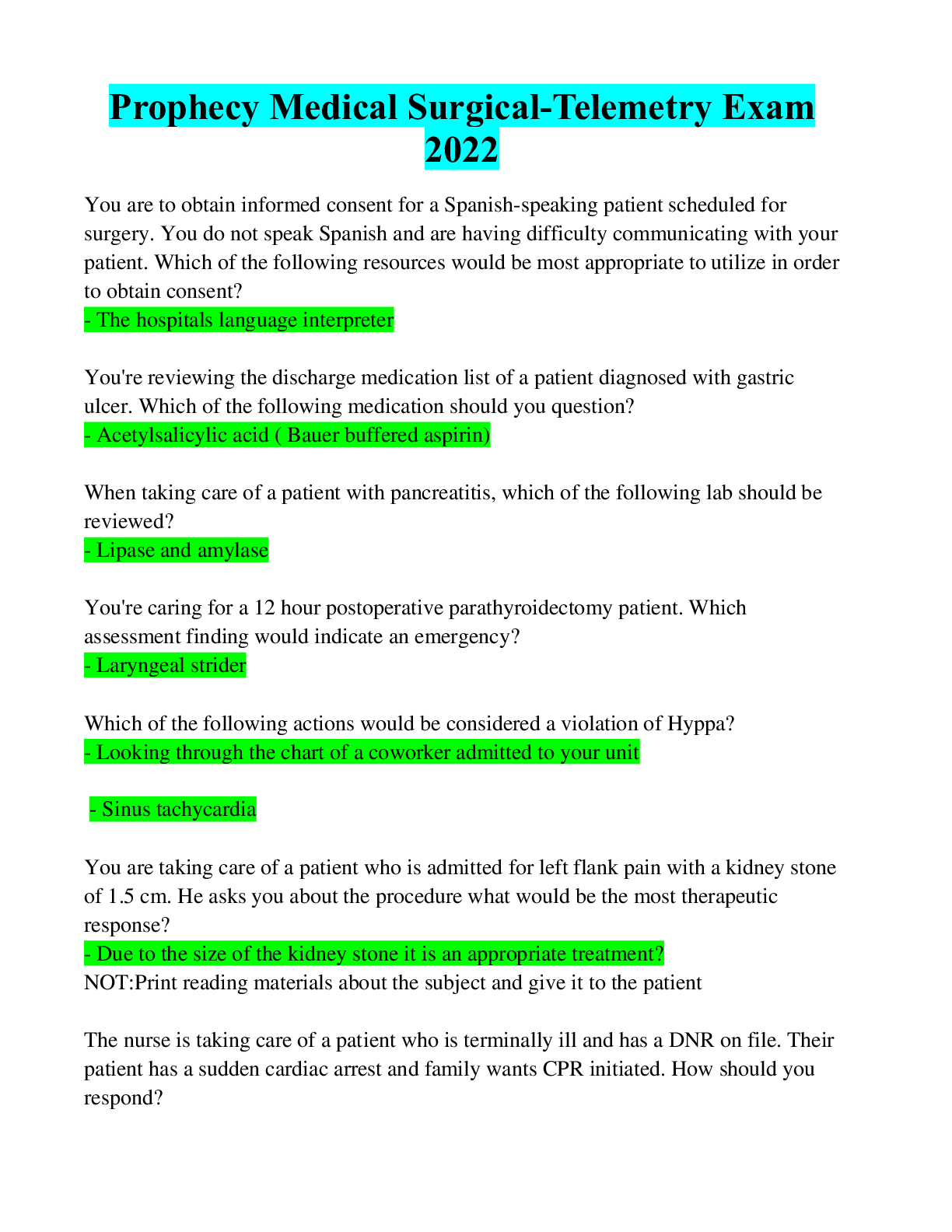


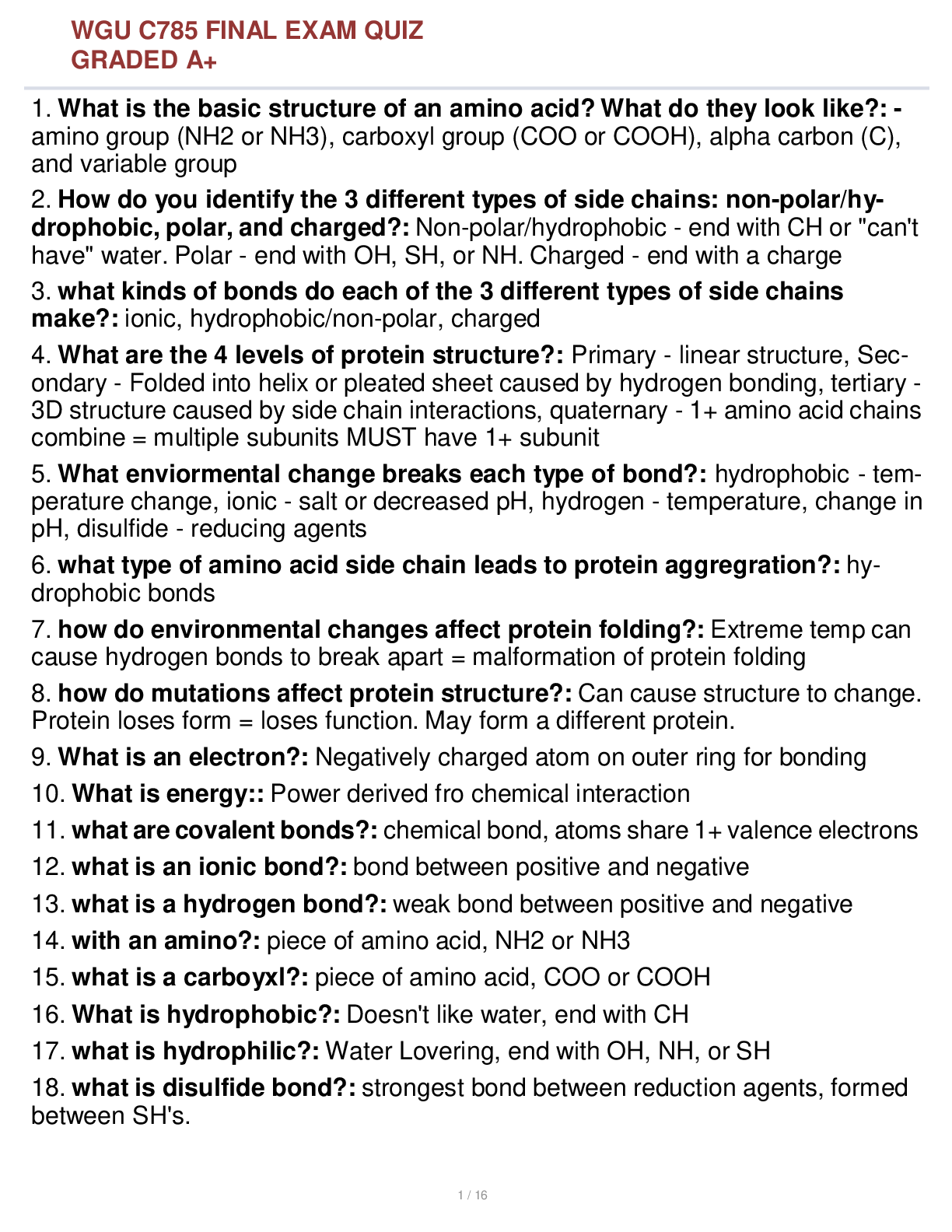
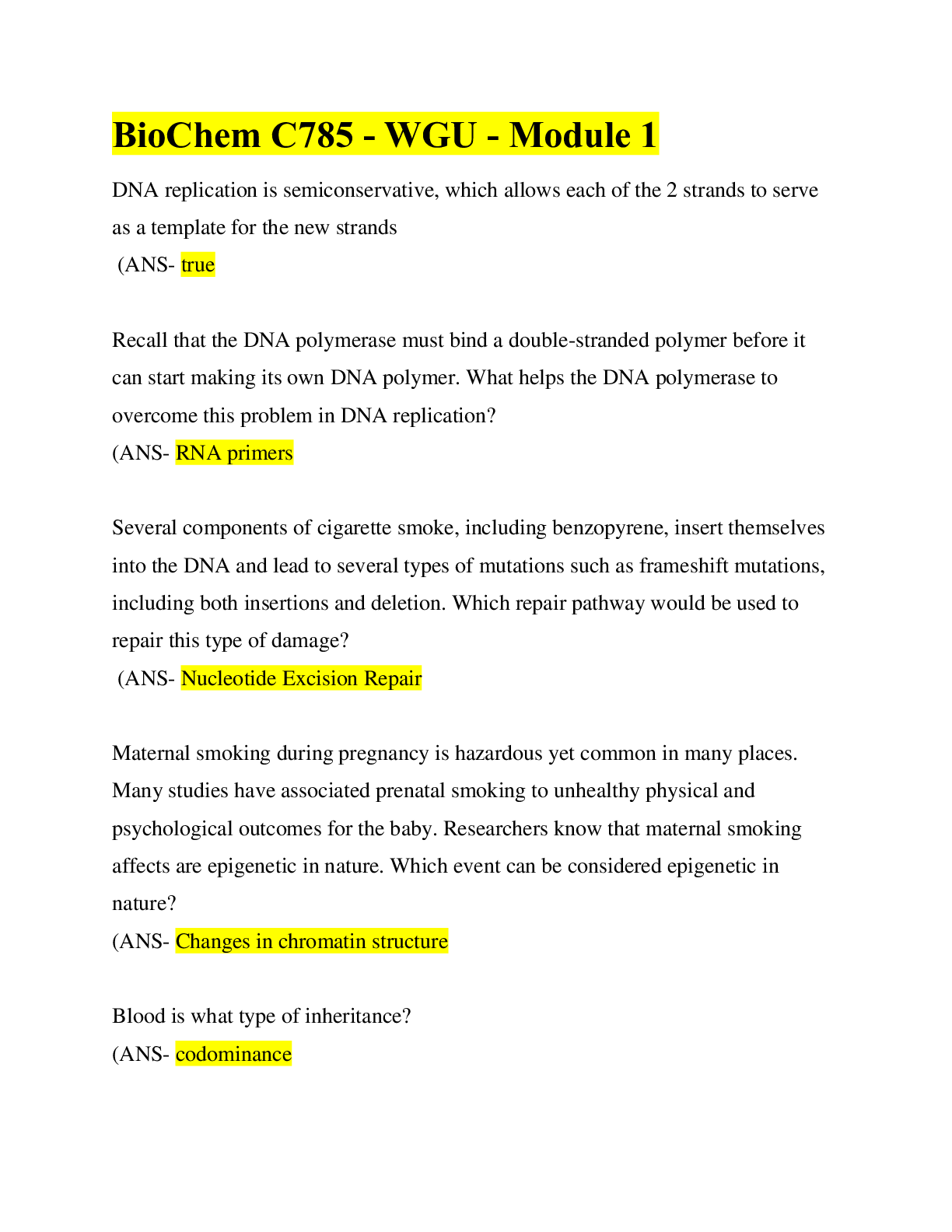
.png)

.png)

